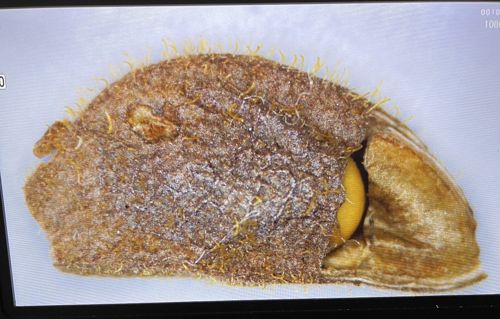Bagworm (larva)
Scientific Name: Psychidae (larval stage, specific genus/species cannot be determined from the image alone)
Order & Family: Lepidoptera, Psychidae
Size: Larval case size varies by species and developmental stage, typically ranging from 1 cm to 6-7 cm in length. The larva inside is smaller.

Natural Habitat
Found in areas with appropriate host plants, including forests, woodlands, orchards, landscapes, and gardens. The larval case provides camouflage and protection.
Diet & Feeding
Strictly herbivorous. Different species feed on a variety of plants, including evergreens (e.g., arborvitae, juniper, pine, spruce) and deciduous trees/shrubs (e.g., maple, oak, sycamore, willow).
Behavior Patterns
Larvae develop inside a case created from silk and plant debris. They may drag their case along as they feed, sometimes protruding their head and thoracic legs from the opening. Adults are typically short-lived and non-feeding, focused on reproduction.
Risks & Benefits
Potential Risks: Can be significant defoliators of ornamental trees and shrubs, especially evergreens. Heavy infestations can lead to severe damage, branch dieback, or even plant death. They can be considered a pest in horticulture and agriculture. Potential Benefits: In natural ecosystems, they are part of the food web, serving as prey for birds and parasitic insects. Their impact on wild plants is generally limited compared to cultivated ones.
Identified on: 9/3/2025